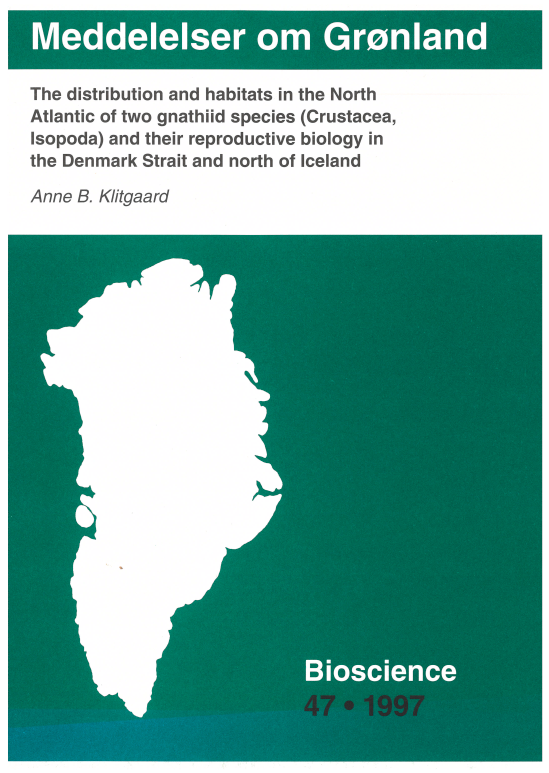The distribution and habitats in the North Atlantic of two gnathiid species (Crustacea, Isopoda) and their reproductive biology in the Denmark Strait and north of Iceland
Contribution from the BIOICE programme (Benthic Invertebrates i Icelandic Waters)
DOI:
https://doi.org/10.7146/mogbiosci.v47.142586Abstract
Caecognathia robusta and C. abyssorum (Crustacea, Isopoda, Gnathiidae) were found associated with several species of demosponges collected in the Denmark Strait and around Iceland. Comparison of the distribution of the two gnathiid species shows C. robusta to be mainly a cold water species occurring north of the Greenland-Iceland-Faroe Ridge, while C. abyssorum is principally an Atlantic species occurring south of this ridge system; the distribution of the two species, however, overlaps in the Denmark Strait. Both gnathiid species demonstrate a well-developed adaptability to utilize the naturally occurring cavities. C.
robusta inhabits such different cavities as the massive, well-defined preoscular cavities of the spherical Geodia mesotriaena and the lacunae of the soft, elastic, encrusting Hexadella dedritifera. C. abyssorum shelters in the lacunae in the encrusting H. dedritifera. The female: male ratio for both gnathiid species seems to be determined by the volume of the chosen cavity. Both species are primarily monogamous and each adult male, instead of having a "harem", appears to survive long enough to complete two or more consecutive female reproductive sequences.
There is indication of continuous reproduction in C. robusta and perhaps also in C. abyssorum. The females of the two gnathiid species produce bigger and, in C. abyssorum, fewer pranizae than reported for "harem" forming gnathiid species.

Downloads
Published
Issue
Section
License
Coypyright by the authors and the Commision for Scientific Research in Greenland / Danish Polar Center/Museum Tusculanum Press as indicated in the individual volumes. No parts of the publications may be reproduced in any form without the written permission by the copyright owners.

